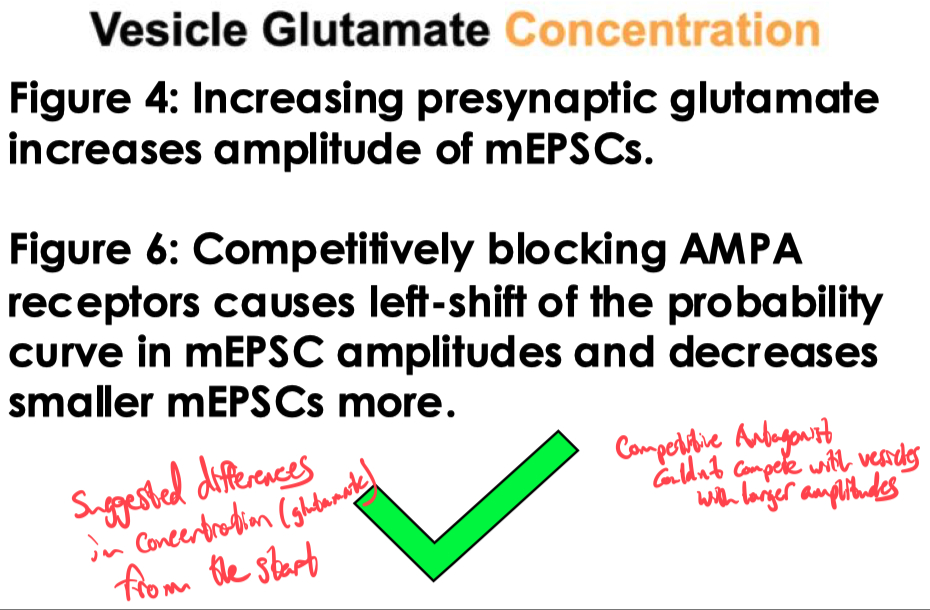https://www.youtube.com/watch?v=nHLTI_39Yjg
https://nicoyalife.com/blog/what-binding-kinetics-can-tell-you-that-affinity-cant/
MCB 80 Neurobiology of Behavior - Quantal Analysis https://scholar.harvard.edu/files/alacoste/files/mcb_80_-_week_3_-_quantal_analysis_revised.pdf https://www.dropbox.com/scl/fi/kncs0qpmuvv2hta534r9m/mcb_80_-_week_3_-_quantal_analysis_revised.pdf?rlkey=8wgzcpvc3cv6gppvzpexqxi1r&st=ew0qws2d&dl=0
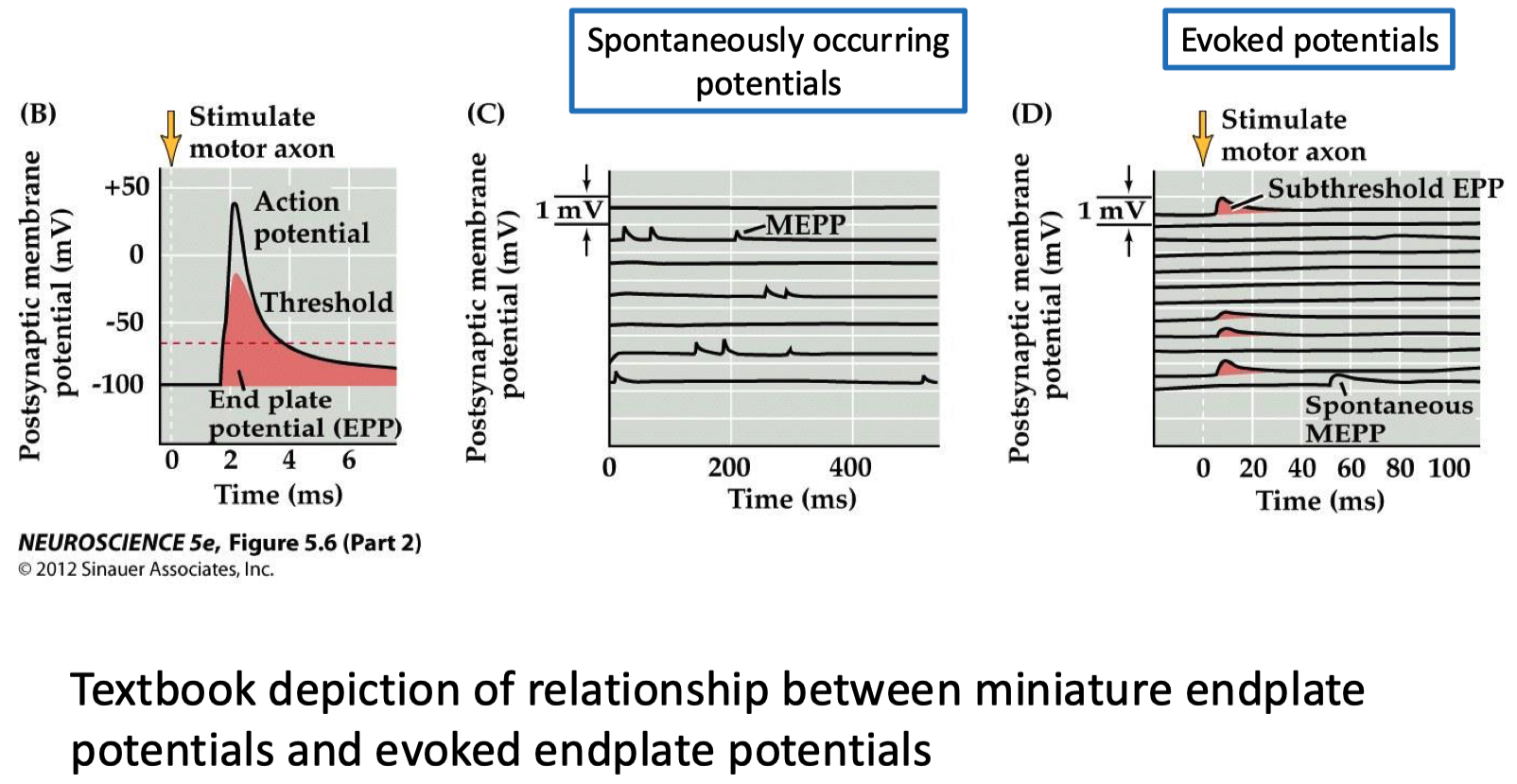
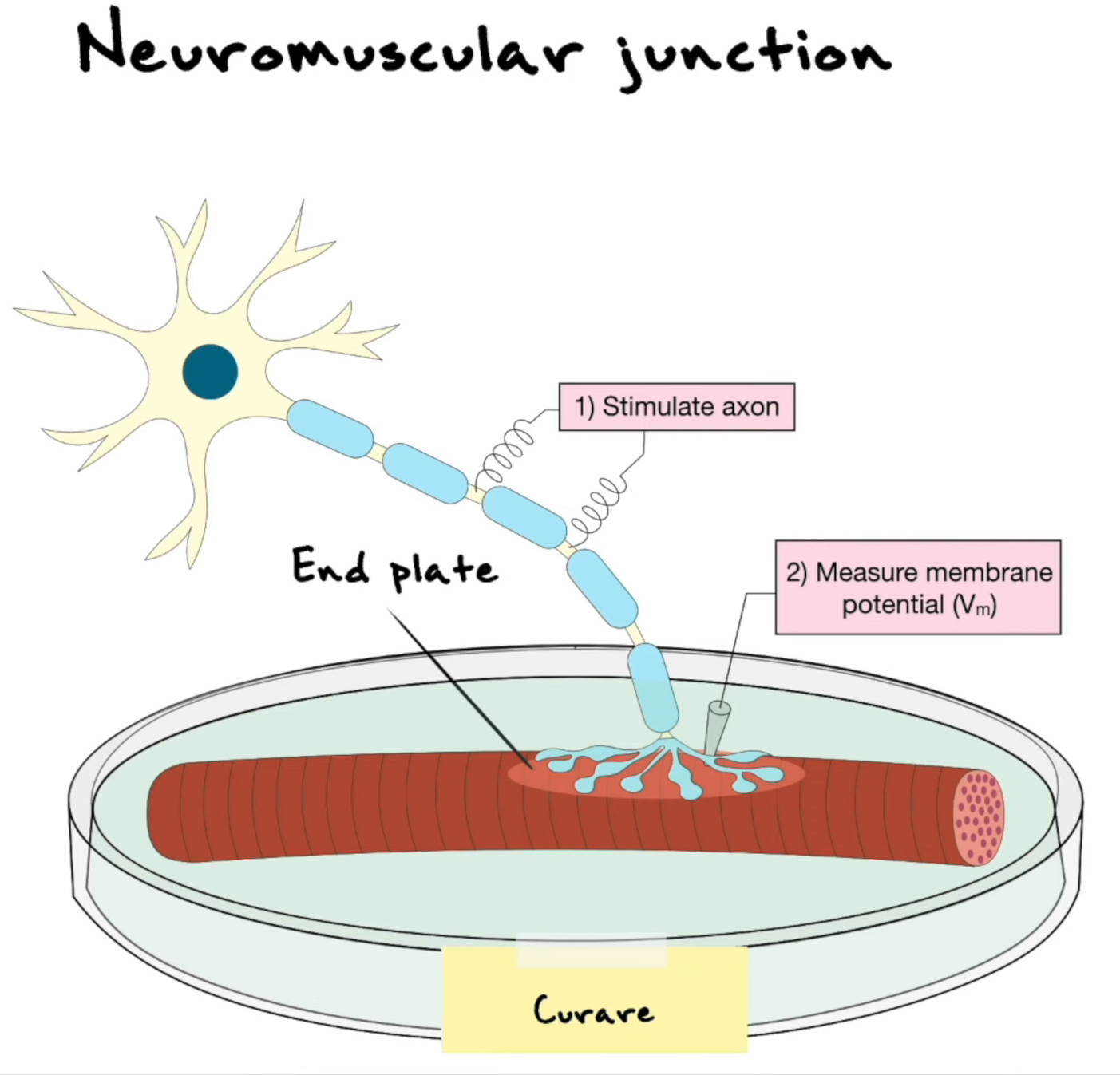


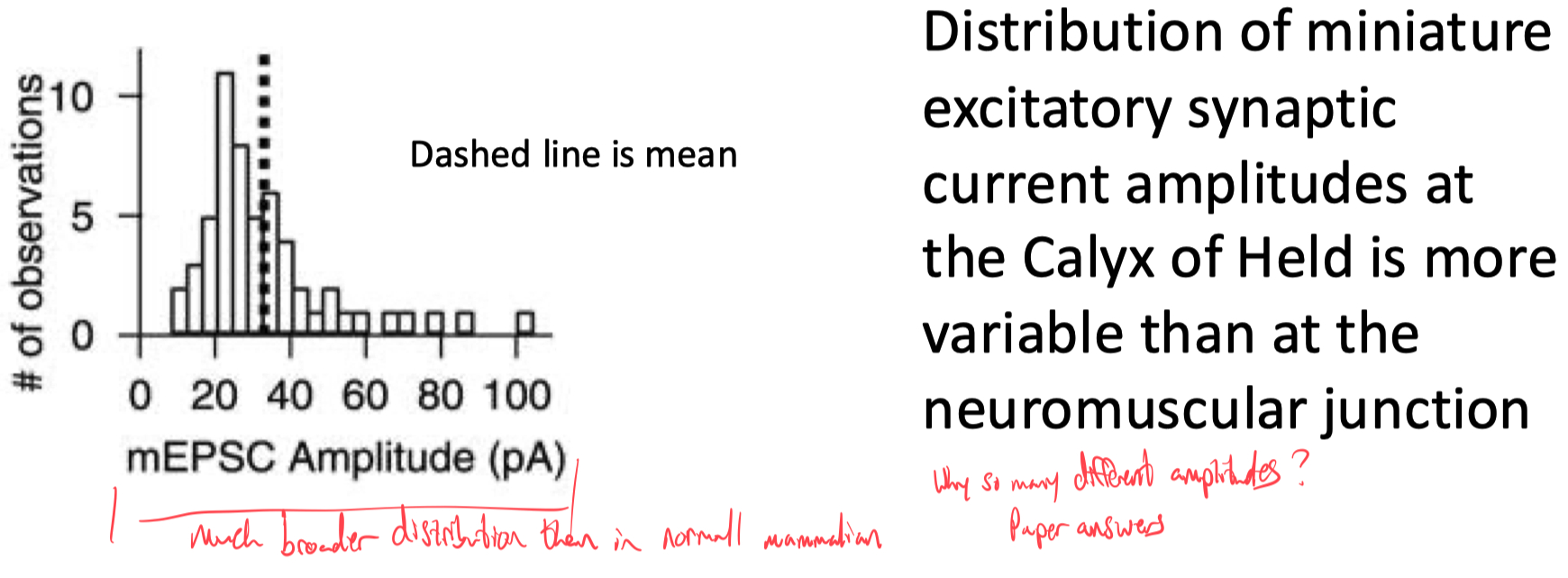


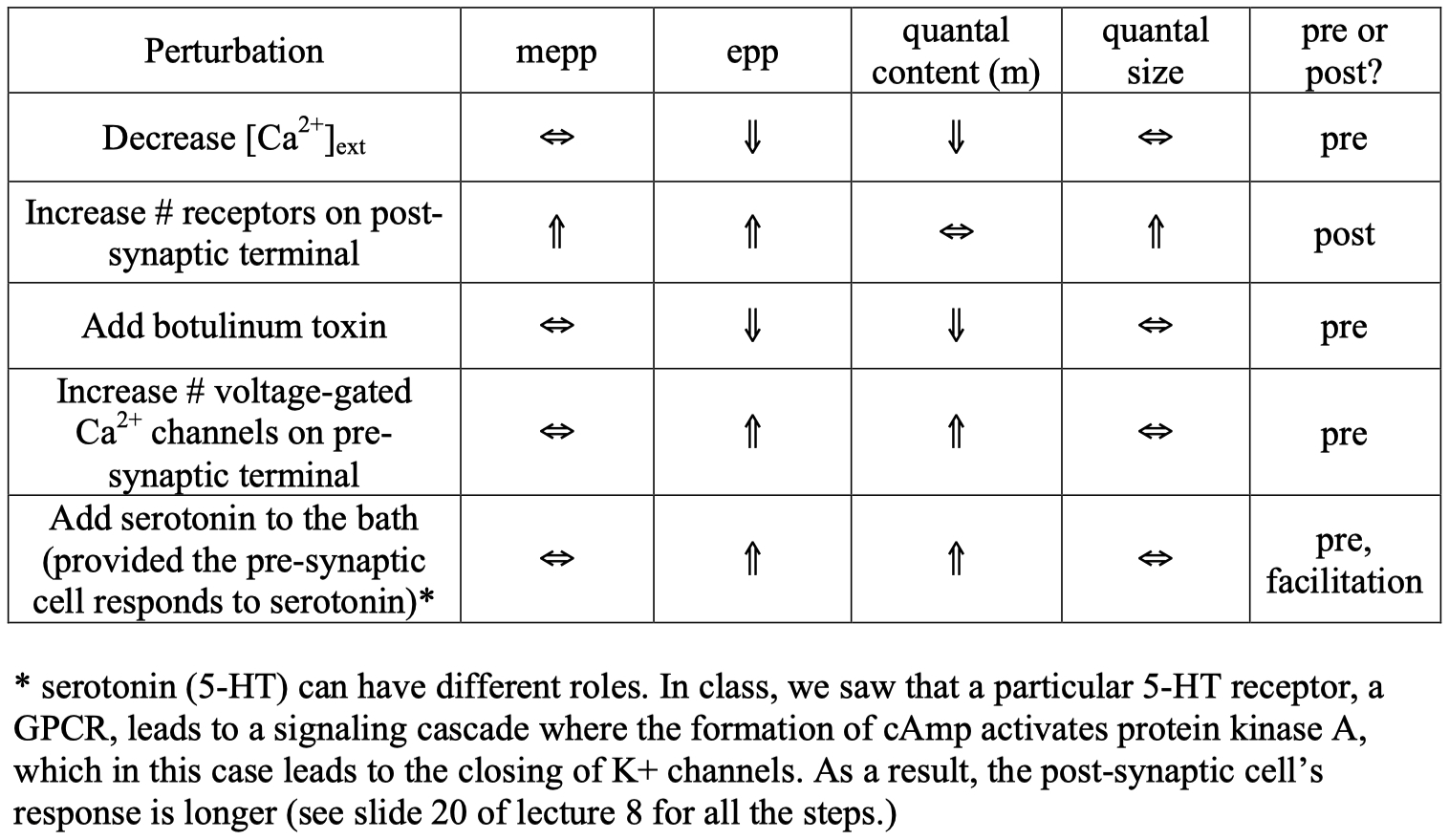
Draw a ratio plot that demonstrates a uniform reduction to 80% of control

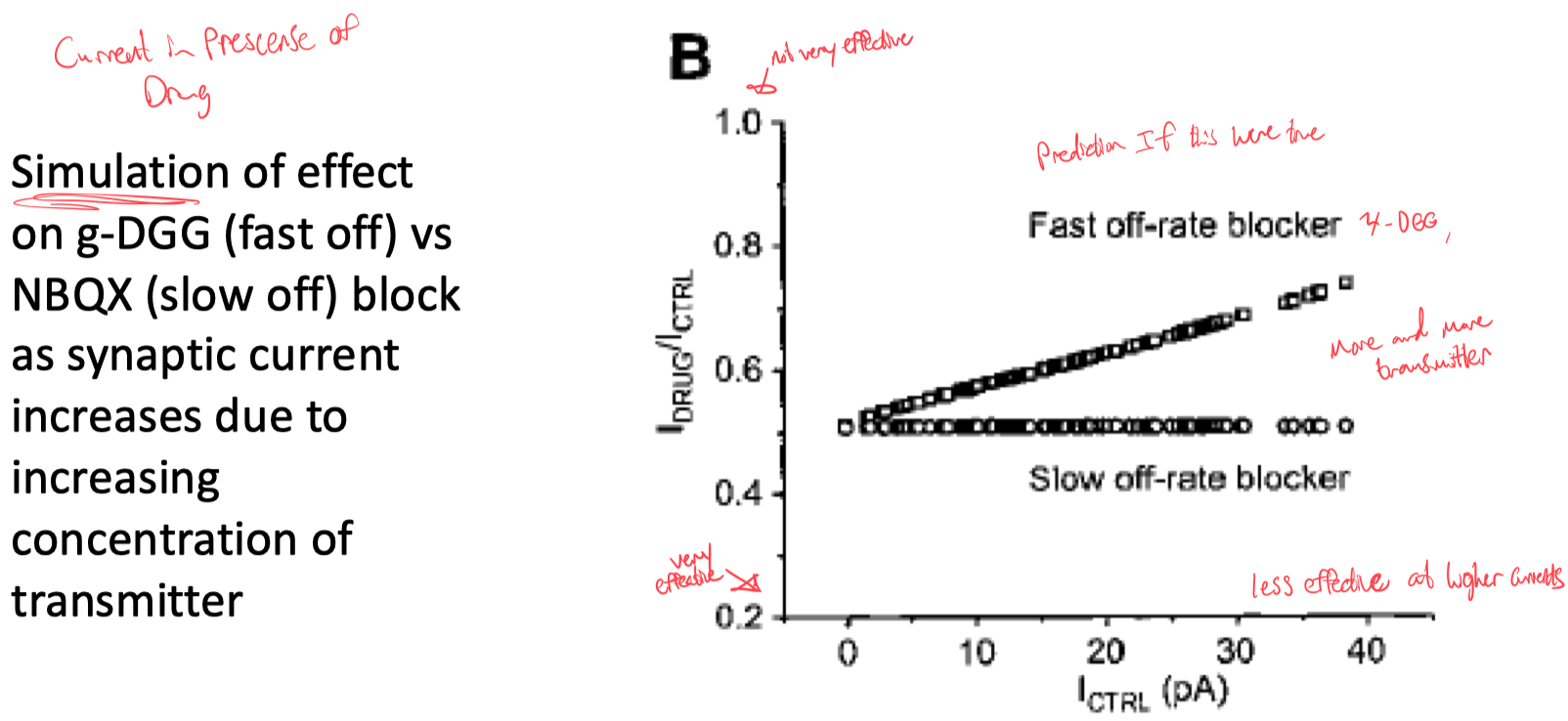
A “fast off‐rate” versus “slow off‐rate” blocker = how fast ( or slow ) a drug molecule unbinds ( dissociates ) from its receptor or channel.
Fast off‐rate: The blocker does not stay bound for very long and can readily fall off (dissociate) from the receptor, especially between channel openings or during low agonist concentrations. In the graph, that means the blocker does less cumulative blocking at high transmitter levels ( the ratio
Slow off‐rate: The blocker remains bound for much longer once it is on. It does not dissociate easily, so under repeated or stronger stimulation ( more transmitter ) , it accumulates on the receptors , producing more blockade ( so
Surface area increase due to vesicle fusion ( indicated by capacitance jump ) does not correlate to mEPSC amplitude.
Smaller change in capacitance for smaller mEPSCs is not seen ,
even though amplitude varied by 2.3 times
Increasing presynaptic glutamate increases amplitude of mEPSCs
Competitively blocking AMPA receptors causes left-shift of the probability curve in mEPSC amplitudes and decreases smaller mEPSCs more
Release-location computation model predicts longer rise time as mEPSC amplitude decreases ,
which is not seen in experimental results.
